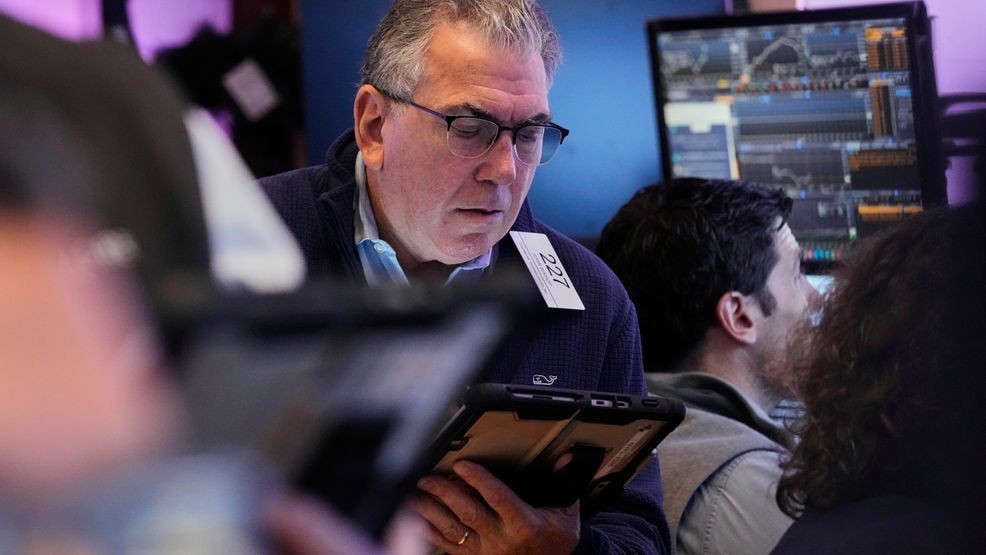WASHINGTON (TNND) — Wall Street keeps setting new records despite a cloudy outlook for the U.S. economy and uneven returns on corporate profits in a boom primarily powered by artificial intelligence and expectations the Federal Reserve will keep cutting interest rates.
The S&P 500 and Dow Jones Industrial Average have repeatedly set new highs throughout the year after an initial slump following President Donald Trump’s sweeping tariff announcement in April. It comes in a year of uncertainty for businesses and the broader economy, with unknowns about inflation, how tariffs will impact consumer spending and prices and recent cracks in the labor market.
Big Tech gains have been a driving force in the market’s continued climb, with the frenzy around building artificial intelligence capabilities, though the jumps in stock prices have raised some concerns about a bubble building. A lot of capital is riding on the hope that huge investments in AI will pay off in increased productivity and add new strength to the economy.
Stock prices have also continued to rise despite a government shutdown delaying the release of economic data that typically drives the market, including the closely watched jobs report on Friday that will bring fresh evidence on the state of the labor market. Investors and Fed officials have instead had to rely on private-sector measures of the economy like the ADP employment report.
“Each of these reports covers only a subset of firms included in the larger BLS employment situation report, but it will be hard for Federal Reserve officials to argue that the labor market has improved since their September meeting,” Oxford Economics lead analyst John Canavan wrote in a note.
Data releases on inflation, consumer spending and other statistics are also at risk of being delayed over the next two weeks if the shutdown drags on. The lack of government data that typically drives market activity and influences Fed officials’ thinking on rate decisions could help keep the market moving upward and reinforce expectations about another cut next month.
Instead of focusing on frequent data releases from the government, investors are instead turning attention to corporate earnings reports with companies starting to release results from the third quarter. Some major companies scheduled to release results in the coming days include PepsiCo, JPMorgan Chase and other big banks.
“If you’re looking for any insight into what’s going on in the world, you’re going to be listening to the commentary that comes out of earnings,” said Russell Rhoads, a clinical associate professor of financial management at Indiana University’s Kelley School of Business. “You would increase the importance of this earnings season versus previous ones just because of the information vacuum from some of the other macroeconomic numbers.”
Prior shutdowns have not had much of an effect on the economy, and any slowdowns have been quickly recovered from once the government reopens, a scenario Wall Street is betting will happen again with this one.
Investors are also betting big on more rate cuts from the Fed to finish the year and into 2026 after officials cut the benchmark rate by 0.25% over concerns of the slowing labor market. Lower rates make it cheaper for consumers and businesses to borrow money, which boosts economic activity.
“The Fed is just going to continue on the path that they’re going to continue on, and part of it’s going to be them working in a vacuum. If they start to change their tone on things, that means they’re seeing things that we don’t,” Rhoads said.
The market has priced in another quarter-point cut at this month’s meeting as having a nearly 93% probability, according to the CME FedWatch tool. Investors are also betting on another cut in December.
Several Fed officials have signaled they will continue cutting rates to keep the job market on track, but others have warned that the path is highly uncertain due to the unusual circumstances facing the economy. While hiring and job openings have slowed, inflation has stayed above the Fed’s goal of 2% and could run hotter due to tariffs.
“With inflation still too high, monetary policy should lean against demand growth to allow the space for supply to grow and relieve price pressures in the economy,” Kansas City Fed president Jeff Schmid said in a speech on Monday. “Overall, I am anticipating a relatively muted effect of tariffs on inflation, but I view that as a sign that policy is appropriately calibrated rather than a sign that the policy rate should be aggressively lowered.”

